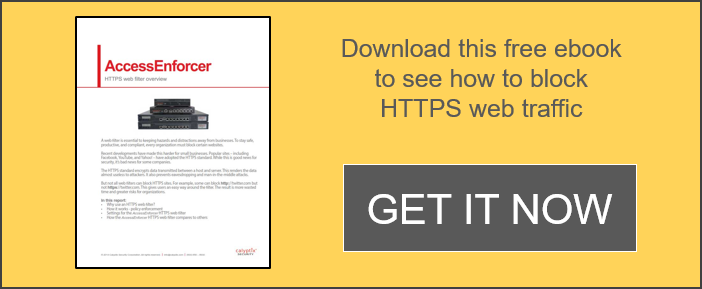Web Filter
Why is Web Filtering Important?
- Data Security: Phishing sites are commonly intended to steal user credentials and other sensitive data. By blocking access to these pages, an organization limits the risk that such data will be leaked or breached.
- Regulatory Compliance: Companies are responsible for complying with a growing number of data protection regulations, which mandate that they protect certain types of data from unauthorized access. With web filtering, an organization can manage access to sites that are likely to try to steal protected data and ones that may be used intentionally or unintentionally to leak data (such as social media or personal cloud storage).
- Policy Enforcement: Web filtering enables an organization to enforce corporate policies for web usage. All types of web filtering can be used to block inappropriate use of corporate resources, such as visiting sites containing explicit content.
Types of Web Filtering
A web filtering service can work in a variety of ways. One of the ways by which web filtering solutions can be differentiated is by how they define acceptable content. Web filters can be defined in a few ways, including:
- Allow Listing: Allow lists are designed to specify the sites that a user, computer, or application is permitted to visit. All web traffic is compared to this list, and any requests with a destination not included on the list are dropped. This provides very strict control over the sites that can be visited.
- Block Listing: Block lists are the exact opposite of allow lists. Instead of specifying the sites that a user can visit, they list sites that should not be visited. With a blocklist, all traffic is inspected and any traffic to a destination on the list is dropped. This approach is commonly used to protect against known-bad locations, such as phishing sites, drive-by malware downloads, and inappropriate content.
- Content Filtering: Content and keyword filtering makes decisions whether to allow or block traffic based upon the content of a webpage. For example, an organization may have filters in place to block visits to sites containing explicit content. When a request is made, the content of the site is inspected and the site is blocked if the policy is violated. This filtering approach enables an organization to block malicious or inappropriate sites that they don’t know exist.
In addition to filter types, different web filtering solutions can differ in terms of where they look to apply their rules. Filters can be applied in a few different ways, such as:
- DNS Filtering: The Domain Name Service (DNS) is the phone book of the Internet, translating domains (like google.com) to the IP addresses used by computers to route traffic. DNS filtering monitors requests for DNS lookups and allows or blocks the traffic based upon policy.
- URL Filtering: A URL is the address of a webpage. URL filtering inspects the URLs contained within web requests and determines whether or not to allow a request to go through based on policy.
- Content Filtering: Content filtering looks at the contents of a requested webpage. If a response violates policy, then it is blocked.
Finally, web filtering solutions can be classified by where the filter is applied. The options for this include:
- Client-Side Filtering: Client-side web filtering is performed by software installed on a user’s computer. It inspects all outbound and inbound traffic and allows or blocks it based upon policy.
- Server-Side Filtering: Server-side filtering is performed via a solution located either on-premises or in the cloud. All web traffic is routed through this solution, providing it with visibility and control
Web Filtering with Harmony Browse
Web filtering is an important component of an organization’s cybersecurity strategy. Malicious web content can be used to deliver malware or to steal user credentials and other sensitive information. Web filtering solutions help to mitigate these threats by managing the sites that users can visit.
Check Point’s Harmony Browse is a client-side web security solution with web filtering capabilities. It enables organizations to perform URL filtering for web traffic and improves corporate security without the performance impacts of routing traffic through a proxy server.
To learn more about the capabilities and benefits of Harmony Browse for web security, read the solution brief and check out this video. You’re also welcome to sign up for a free demo to learn how Harmony Browse can help to protect your organization and employees again..
Types of Web Filters and How They Can Work for Your Clients
Businesses and organizations of all kinds use web filters to block online content that might be malicious, unsavory, or distracting.
For example,
businesses often block social networking sites to prevent employees from wasting time. Schools are required to block pornography to protect children online. And many organizations block malicious websites that host exploits and malware.
A good web filter can fit all of these needs, but which types are good?
Choosing the right type for a client is imperative for smooth day-to-day operation, so knowing the main types of web-filtering programs is a must.
From simple to more involved, the first type of web filter on our list is browser based.
Browser-based filters
Browser-based types of web filters are typically extensions, applications or add-ons that can be installed and used with a particular web browser.
While not the most thorough filter, these types of web filters are widely available and are very convenient for users.
Some popular options for browser-based filtering include Blocksi, a program available for Google Chrome and Mozilla Firefox which blocks pre-defined content from user access.
Another popular (and humorous) web filter available for Chrome is the Kardashian Filter, which removes all content related to the Kardashian family from user view.
The main downfall of these types of web filters is that users can circumvent them by switching web browsers. By doing so, the user renders the filter on the initial browser useless.
So if you decided to use Firefox when you’ve got the Kardashian Filter installed on Chrome, you will still be susceptible to headlines, copy and imagery that references the celebrity family.
 Search engine filters
Search engine filters
Search engine types of filters sift out unsuitable content from the results a user sees when looking up information through a search engine.
Some search engines have this feature built in to their user interface. Google and Bing have Safe Search options for those who want to filter out inappropriate content in their search results.
Both of these search engines have Safe Search on as a default, but one does not need administrative privileges to turn these filters off.
Search engine filters can also be easily circumvented if the user knows the URL of the site they are trying to access or if they use another search engine that does not have a similar filter.
Client-side filters
Client-side filters are filtering programs installed on the device an employee or student uses.
Such filtering programs typically have to be installed and configured on each individual device, making these types of web filters more time consuming to install than others.
While these types of web filters may be ideal for a small business, larger businesses may not want to deal with the hassle of setting up this type of web filter on more than a few computers.
These types of web filters can also be easily circumvented by those who have administrative privileges since these types of web filters are often directly installed on the device and not controlled by a central program.
C ontent-limited ISPs
ontent-limited ISPs
Content-limited ISPs are internet service providers who block off specified websites from all who subscribe to the ISP’s service.
Typically found in countries who censor content on the web, these types of web filters are gradually making their way to countries around the world.
Virgin Media for example, is an ISP that used this type of web filtering to block the Pirate Bay from subscriber access.
While these types of web filters are not yet widely available, they may be in the future.
Network-based filters
- The next type of web filtering is called network-based web filtering. Network-based types of web filters are typically implemented at either the transport or application layers of a network.
- These types of web filters are set up as either a web proxy or a transport proxy to guard the network. They serve as the middleman between outgoing requests and incoming information.
- They also usually guard the individual IP addresses of all of the workstations on the network by only displaying the IP address of the filter to outside users.
- The Calyptix AccessEnforcer’s web filtering technology falls into this category. It uses a web proxy at the transport layer to oversee and guard the network from unsavory/unsafe content that users may try to access.
The AccessEnforcer’s web filtering capabilities can also be customized to fit a client’s needs, allowing them to block different categories of web content or specific sites.
Related Resources:
Calyptix AccessEnforcer Features

Comments
Post a Comment